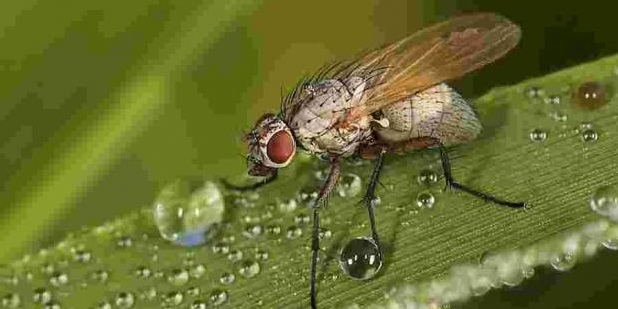
Wheat bulb fly risk this year is the highest since 2011, with risk highest in northern England.
This is the main finding of the 2015 autumn wheat bulb fly (WBF) survey published by AHDB Cereals & Oilseeds.
The results are consistent with interim results, based on just under half the survey data, published is September.
A key message from the survey is that the majority of cereal crops sown from November onwards in northern England are likely to benefit from a seed treatment.
About wheat bulb fly
WBF can attack all cereals (except oats) and is most prevalent in eastern England and north-eastern England.
The pest lays its eggs in late summer in bare soil following fallows, early harvested crops or between rows of crops such as potatoes, sugar beet and onions.
The survey, conducted by ADAS, involves taking soil samples in September from 30 fields prone to WBF attack (split equally across eastern and northern England) and calculating the number of wheat bulb fly eggs/m².
Highest risk since 2011
In autumn 2015, one field was considered to be at ‘very high’ risk, with egg numbers greater than 500/m² and four sites were considered at ‘high’ risk, with egg numbers between 250/m² and 500/m².
As five sites (17%) were above the 250 eggs/m² ‘threshold, the overall risk in 2015 is the highest recorded by the survey since 2011.
Sites above this threshold may benefit from an egg-hatch spray (chlorpyrifos) between the start of egg hatch in January and its peak in February or March – particularly if crops are poorly tillered.
Caroline Nicholls, AHDB Research Manager, said: “There are many factors that influence wheat bulb fly risk but it is possible that the late harvest had an effect this year.
“Where crops were cut late, it gave more time for fungi to develop in cereal ears and this provided a good food source for adult females helping them to mature more eggs.”
Risk to crops sown September to October
Most of crops drilled in this period will be sufficiently well developed by the time of wheat bulb fly egg hatch in January/February.
At any drilling date, poorly tillered crops may need an egg-hatch spray, especially where egg populations are high.
In northern England, three out of 15 sites (20%) were categorised as ‘high’ risk.
In eastern England, two out of 15 sites (13%) were categorised as ‘high’ or ‘very high’ risk.
Risk to crop sown November to December
Seed treatments are most effective on shallow-drilled (2.5–4cm) crops from November and, for such crops, a treatment threshold of 100 eggs/m² is applicable.
In northern England, 87% of monitored sites were above this level but in eastern England only 27% of sites were above this level.
In northern England, the majority of crops sown from November onwards would benefit from a seed treatment.
Risk to crops sown January to March
Irrespective of egg numbers in the soil, winter crops sown in 2016 (before the end of March) could benefit from a seed treatment as they may be poorly tillered at the time of egg hatch.
Egg-hatch sprays may also be required at ‘high’ or ‘very high’ risk sites.
